Sometimes people just don’t want one of those big and bulky chickens. They want something a touch smaller. On this page, we are going to look at the smallest chicken breeds in the world.
While none of these chickens are going to be fantastic for meat raising, some of them are going to be good egg layers. They won’t take up that much space either!
The small breed of chickens a.k.a bantam chickens are about one fourth to one-fifth as heavy as a large size chicken. They generally weighing 2 pounds (0.9 kg) or less.
What are the Smallest Chicken Breeds
Of all small breeds of chicken in the world, these are the top 10 smallest chicken breeds:
- Serama Chicken – 6 oz.
- Ducth Bantam – 20 oz.
- Japanese Bantami – 21 oz.
- Sebright – 22 oz.
- Old English Game – 24 oz.
- Barbu d’Anvers – 24 oz.
- Rosecomb – 26 oz.
- Cubalaya – 26 oz.
- D’Uccle – 26.5 oz
- Booted Bantam – 30 oz.
1. Serama Chicken, 6 oz. (170 g) – The Smallest Chicken Breed
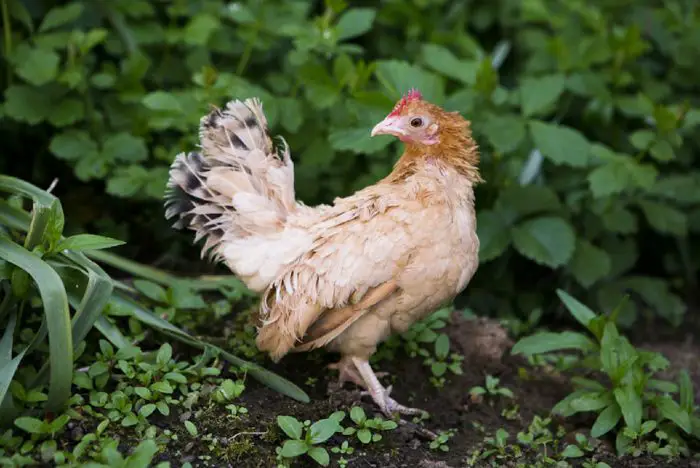
The Serama chicken is the smallest chicken breed in the world. You are not going to find one weighing more than 7 ounces or over 10″ tall, with the vast majority of Serama chickens being smaller than this.
The Serama chicken is a stunning bird. Not only is it one of the smallest chicken breeds, but it walks in a slightly different way to other chickens. It walks pretty much ‘upright’, with its breasts puffed out.
This means that many people actually get a Serama chicken to look at.
This is a true bantam breed developed in Malaysia, this means there is no large variety of this fowl.
To cap it all off, the Serama Chicken is a fairly decent egg layer. It does lay eggs a bit on the smaller side, but it lays them fairly consistently.
Do You Want Big Beautiful Eggs?
Then you must check this ORGANIC & NON-GMO feed. Our hens lay jumbo eggs now and they love this feed! You can check it right here on Amazon.
2. Dutch Bantam, 20 – 21 oz. (570 – 590 g)

This small chicken breed is a true bantam, named after a town of Bantam on the island of Java, Indonesia. They were brought to Europe in the 1600s by spice ships. That is how the word ‘bantam’ has become synonymous for small chicken breeds.
They are very small chickens with upright carriage and an impressive long tail.
They are famous by being capable for long flight, so you will need good fencing if you plan to raise them in your backyard.
3. Japanese Bantam, 21 oz. (600 g)
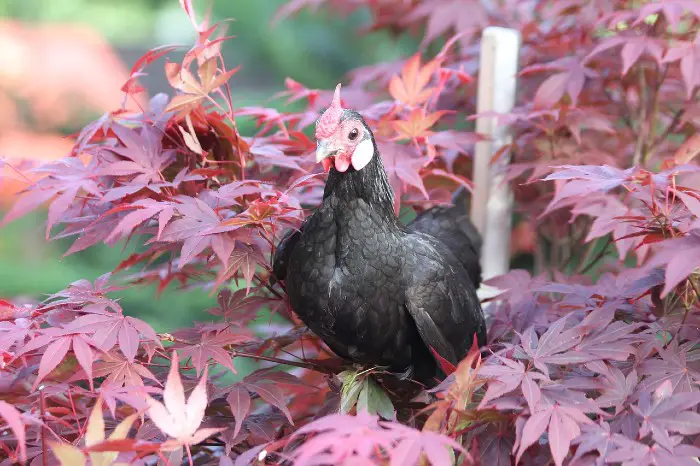
A lot of people purchase the Japanese Bantam due to the gorgeous tail it has… which is actually taller than the actual chicken.
While it is not a productive chicken in the slightest, this is a stunning looking bird and can brighten up any garden. It helps that the Japanese Bantam is available in several different colors.
The problem is that this is a very, very hard chicken to breed. It has a faulty gene. This means that 25% of all fertilized eggs will fail to hatch. Another 25% of eggs will result in a chicken that cannot enter shows, and the other 50% will give a quality chicken.
So, you really have a 50/50 chance of getting a show quality chicken. Although, if you are fine with your chicken looking ‘good’, and do not care about the length of the leg, then you have a 75% chance of success.
4. Sebright, 22 oz. (625 g)
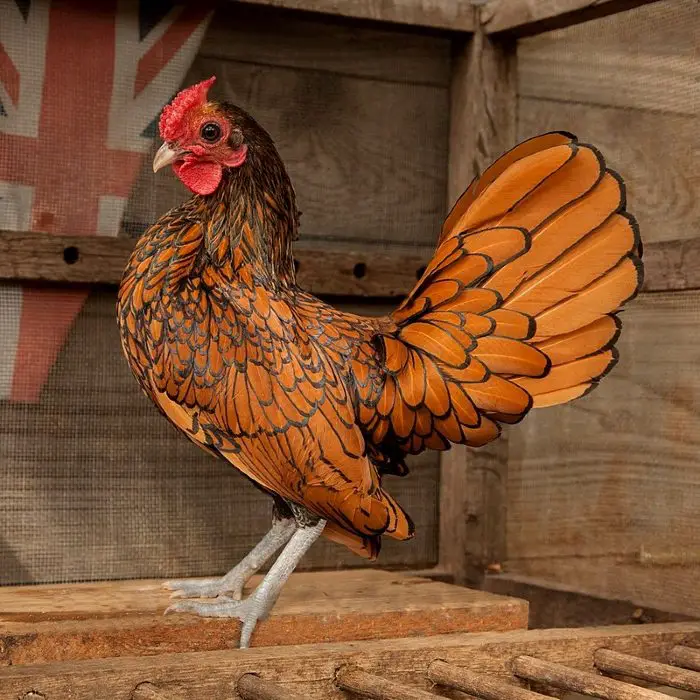
The Sebright chicken is a true bantam breed and a show chicken often seen on chicken shows. Being a true bantam just like the Serama chicken means that there is not a larger version of the Sebright. It only comes in a small size.
This small chicken breed originates in the United Kingdom, and this is where the vast majority of the breeding for the Sebright seems to be taking place nowadays.
Part of the reason as to why the Sebright is not raised extensively is because it is one of the most difficult chicken breeds to look after.
It does look stunning, but it can be difficult to raise. It is only going to put out about 60 eggs per year too, which means that it is not going to be ideal for the vast majority of people who are raising chickens. It simply isn’t productive enough.
5. Old English Game, 22-24 oz. (625 – 680 g)

The Old English Game is available in a variety of different sizes. We are talking about the bantam version here, which will weigh about 24 oz. at the most.
This is a show chicken. If you are raising it for eggs, you will not have any success. You will get 40 eggs per year. These will only be small eggs.
The chicken does not have any use beyond being used for shows (it was originally bred for cockfighting). That being said, this is a classic bird, and it is going to look fantastic roaming around with the rest of your flock.
6. Barbu d’Anvers, 24 oz. (700 g)
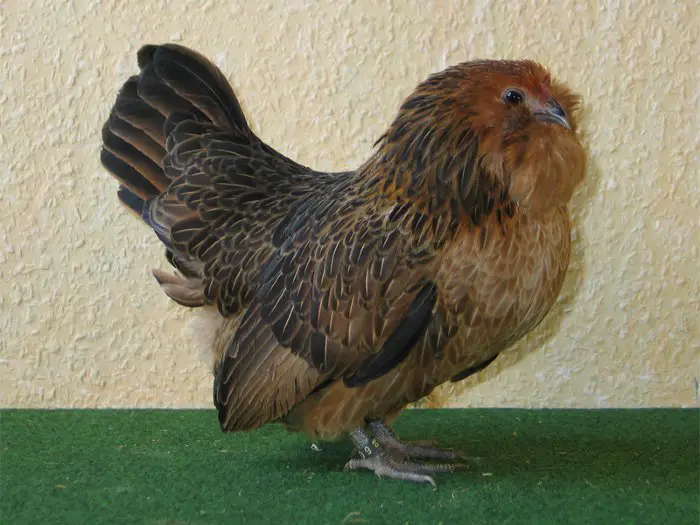
As the name of this chicken suggests; 700 git originated in Belgium, and it has a little bit of a feathered beard. This is pretty much going to be an ornamental or show bird.
Due to the small size of the Belgian Bearded chicken breed, it seems to work exceedingly well when it is raised in a smaller location. It seems to be a quiet bird too, so this may actually be suitable for raising in urban areas.
The Belgian Bearded should give you about 100 small eggs per year.
7. Rosecomb, 22 – 26 oz. (625 – 740 g)

This is the oldest of the small breeds. It has existed since at least the 14th century, although a lot of people believe it was around far earlier than this. As the name suggests, the main focus of this breed is the comb.
This is not a chicken for beginners. It has a ton of health issues. It is difficult to raise. Males are often infertile. It barely lays any eggs, and the meat tastes foul. We suppose that it looks good, though.
Only go for this chicken breed when you are experienced with chicken rearing.
8. Cubalaya, 26 oz. (740 g)
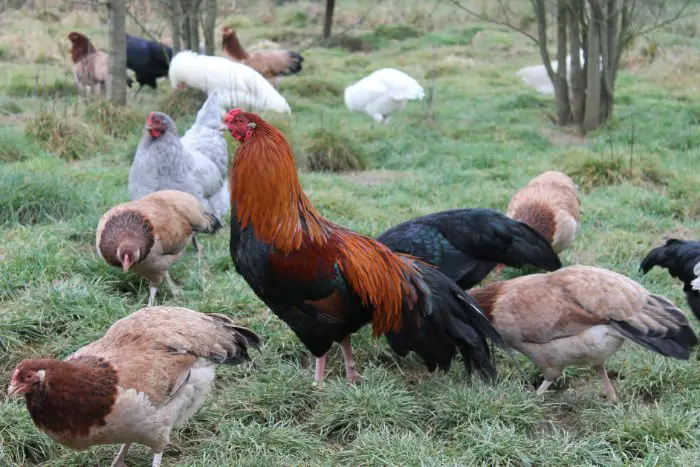
The Cubalaya chicken is a Cuban bird (it has roots in Spain). It is, interestingly, the only breed officially recognized in Cuba.
There doesn’t really seem to be a purpose to the initial breeding of the Cubalaya. However, nowadays, we know that it has several uses.
While you are not going to be getting any meat from the Cubalaya, you are going to end up with a good foraging chicken, which can help to keep an area free of pests.
The major benefit of the Cubalaya comes from the fact that it is a broody chicken. A lot of backyard chicken owners will actually use the Cubalaya to raise the eggs of other chicken breeds.
In terms of egg production, the Cubalaya should give you somewhere between 100 and 150 eggs per year.
9. D’Uccle, 26.5 oz. (750 g)

The D’Uccle, like the Belgian Bearded, is a breed that originates from Belgium. Honestly, it looks pretty much the same as the Belgian Bearded. The D’Uccle just has a slightly different beard style.
It is worth noting that this is a breed that seems to be dying out. It is currently critically endangered. Part of the reason for this is because it is not an easy chicken breed to raise.
It doesn’t really seem to be getting a lot of use at showers, and the other uses (egg-laying and meat) are not really going to be a factor with this chicken.
That being said, if you can get the D’Uccle, then you are going to have a gorgeous chicken that is immensely friendly. While this is not going to be a productive chicken breed at all, it is almost certainly going to brighten up your garden.
10. Booted Bantam, 30 oz. (850 g)
We will round up the list of the smallest chicken breeds in the world with the Booted bantam.
This is a small chicken breed originating from bantams that were brought to Europe from Asia and developed in the Netherlands.
One interesting fact about them is that they are one of the 8 chickens breeds with fully feathered legs.
Hens are known to be good mothers, and lay very small white or tinted eggs.
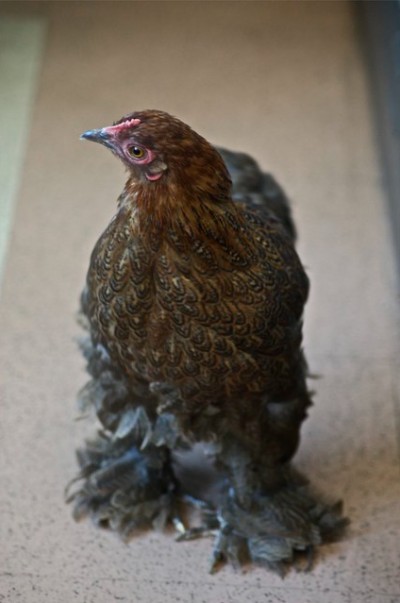
Smallest Chicken Breeds – Summary
So, there you have it. Ten of the smallest chicken breeds in the world. If you are looking for a chicken on the smaller side of things, then anything mentioned on this list would go down well.
However, we really do suggest that you look into breed profiles for each of these chickens. That way, you know what you can expect.
Remember; smaller chickens are not all that productive (except the Olandsk Dwarf chicken), and some do carry health issues. Do not dive into owning a smaller chicken without doing your research first!


Pingback: Cubalaya Chicken - The Unique Cuban Chicken Breed - ChickenMag
Pingback: Feathers, Farms, and Friendships: 3 Reasons Why Chickens Are Remarkable - Topbillion Directory
Pingback: Uncovering the Secrets of the World’s Largest Bird: The Majestic Ostrich | Virtuals Directory
Pingback: Swedish Hedemora Chicken - Colors, Eggs, Meat & More - ChickenMag